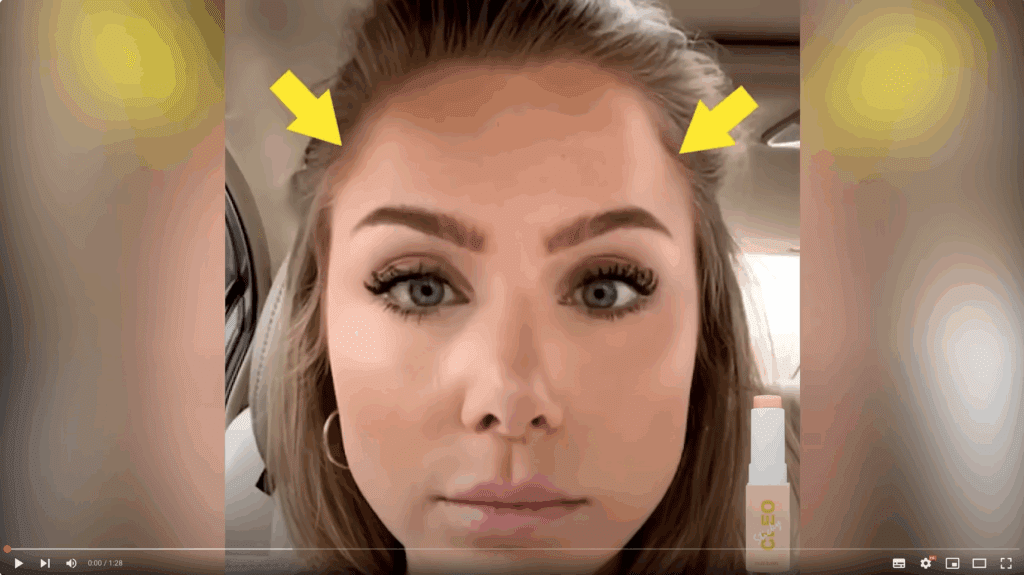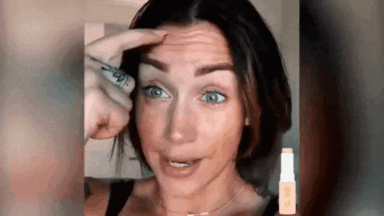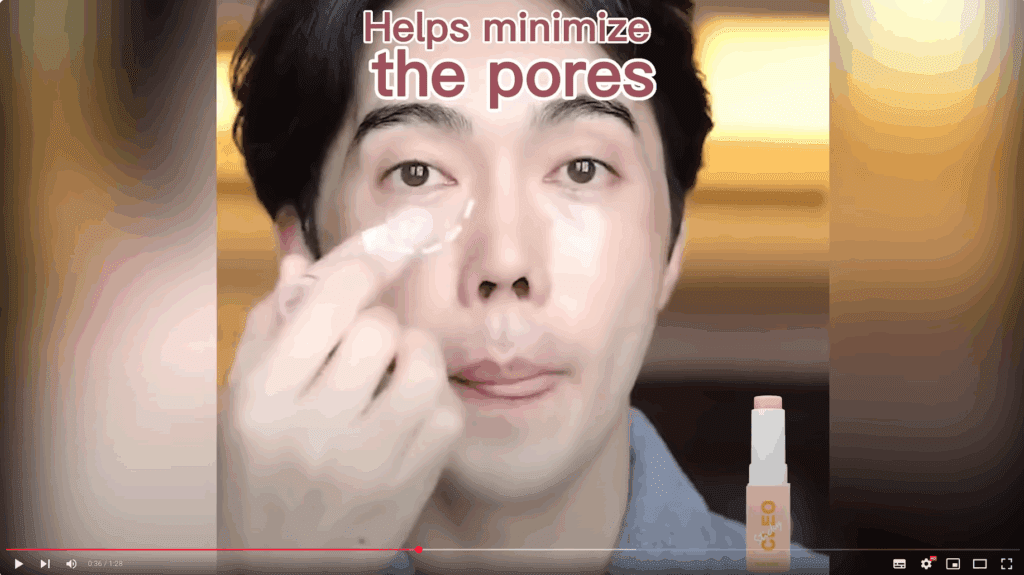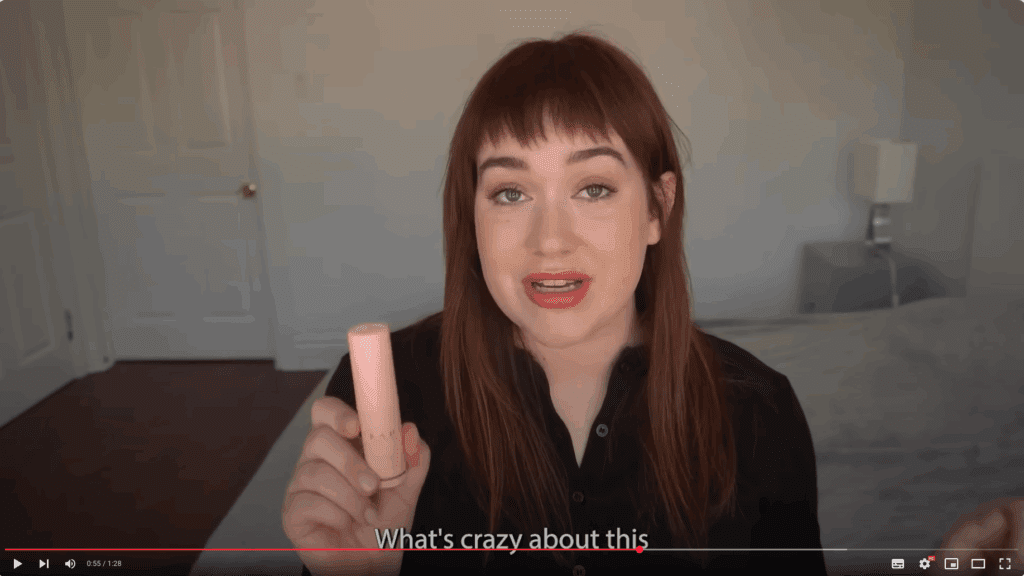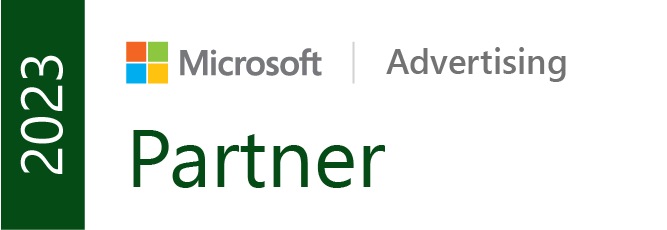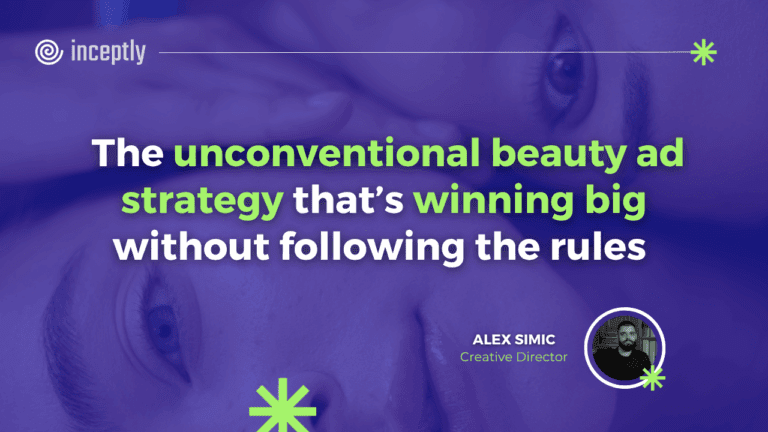
When looking at winning ads on YouTube, we usually look for the perfect examples that ‘play by the book’, and that are relatively easy and safe to copy.
The ad we’re talking about today is an ad that I have skipped over because of how seemingly non-compliant the ad is. And then it hit me – why not write about it and see what we can learn from its success?
And here we are, talking about Glo7’s Cleo Wrinkle Collagen Moisture Balm ad.
Want to brainstorm with our team on new ways to scale your business with YouTube Ads (and other performance video platforms)?
Join us for a free YouTube ad brainstorming session👇
So let’s jump right in.
The secret behind Glo7’s 'non-compliant' wrinkle collagen ad that’s actually working
First off, let’s talk about what makes this ad so damn unconventional. For starters, the first 50 seconds out of a 90-second ad have no voiceover whatsoever. That’s right, almost a full minute of silence with just visuals and minimal on-screen text. In a world where we’re all fighting for attention in the first 5 seconds, this ad is taking its sweet time. And you know what? It’s working. However, that’s still unconventional in an innocent way, and to be fair, there had to be something to make up for it.
That’s where it gets really interesting – and a bit dicey. The visuals in this ad are pushing the boundaries of what’s typically allowed in beauty product advertising. We’re talking about demonstrations that show the product seemingly erasing under-eye bags and dramatically reducing wrinkles. Now, if you’ve been in this game for a while, you know that kind of stuff usually gets flagged very fast and is a nightmare to get approved.
So, how the hell did they get away with it? Let’s break it down:
1. Animated faces
For the under-eye bag demonstration, they used an animated human face.
This might be how they slipped past the compliance checks. It’s a clever workaround, but here’s the kicker – the changes shown on this animated face are still impossible for a human. It’s a grey area, and they’re exploiting it beautifully. On paper, it shouldn’t be possible, but that seems to be the only explanation as to how it could’ve been done.
2. Arrows instead of close-ups
Instead of showing close-ups of specific facial areas (which often triggers disapproval), they’re using arrows to point at these areas.
It’s the same effect, but technically different. Interesting, right?
3. Before and after visuals
Now, this is where it gets really interesting. They’re showing before-and-after videos of faces with and without wrinkles, with dramatic differences.
Normally, this would be a one-way ticket to a call with Google Support and Google Reps. But here’s what might’ve been the reason why it passed (only speculation though) – they never explicitly say these changes were caused by the product. It’s implied, sure, but not stated, and even the implications are pretty detached and vague. This could still potentially trigger a clickbait policy for connecting the product with a deceitful outcome, but somehow, they’re getting away with it.
4. Compliant(ish) on-screen text
While the visuals are going wild, the on-screen text is playing it relatively safe. It’s either product-focused or stating obvious points like “help minimize the pores.”
It’s not perfect in terms of compliance, but it’s not as in-your-face as it could be given what we’re seeing.
Now, let’s talk about the second part of the ad – the UGC/presenter piece. This is where they start playing it a bit safer. The presenter is younger, making her claims more believable. She’s confident, which helps sell the message. And the script? It’s not wild at all. You can take a look at it yourself.
It’s enthusiastic, sure, but it’s not making any outlandish claims. It’s focusing on convenience, popularity, and general benefits. Smart move. They’ve already grabbed people’s attention in the first half; no need to go crazy here, too.
So, what’s the big takeaway here? Even unconventional approaches like having no VO for the first minute can work really well. Yes, part of this ad’s success might be due to visuals that are really pushing the boundaries of compliance. But here’s the thing – there are compliant ways to achieve similar effects, especially if your product can deliver great results.
And this isn’t just for beauty products. This approach can work across the board. The key is to think creatively about how you can showcase your product’s benefits without explicitly making claims that’ll get you in hot water.
Remember, in the world of YouTube advertising, sometimes it pays to color outside the lines a bit. This ad is a masterclass in walking the line between compelling visuals and compliant messaging. It’s finding those grey areas and exploiting them to the fullest.
Now, I’m not saying you should go out and start making ads that blatantly violate policies. That’s a quick way to get your account suspended, and trust me, that’s not a headache you want. But what I am saying is this: don’t be afraid to push the envelope a little. Think outside the box. Look for creative ways to showcase your product’s benefits that might not be the typical approach.
How silence, animation, and bold choices can skyrocket your results
Here are a few key takeaways from this ad:
1. Silence can be golden: Don’t underestimate the power of visuals. Sometimes, letting your product speak for itself can be more powerful than any voiceover. Not to say that a good combo isn’t even better, but never overlook the visuals.
2. Animation can be your friend: Using animated elements can give you more flexibility in demonstrating product effects. Just be careful not to go too far beyond what’s realistically possible. It will be very interesting to see how much and what Google will keep allowing, especially with the growth of AI in this field.
3. Implication vs. Explicit claims: There’s a fine line between showing dramatic results and claiming your product caused those results. This ad walks that line expertly.
4. Balance is key: If you’re going to push boundaries in one area (like visuals), consider playing it safer in others (like on-screen text). Even that is not enough, but could be one of the explanations as to what has saved the ad.
5. UGC can add credibility: Following up bold visuals with more grounded, user-generated content can help balance out your ad and add a layer of authenticity.
Remember, the goal here isn’t to trick the system or mislead viewers. It’s about finding creative ways to showcase your product’s true benefits in a way that captures attention and drives action.
Now, I can already hear some of you saying, “But Alex, what if I don’t have a product that can show such dramatic results?” Fair point. But here’s the thing – every product has its unique selling points. Maybe it’s not about erasing wrinkles, but about saving time, or solving a common problem, or making life easier in some way. The principle remains the same: find creative, visually compelling ways to demonstrate those benefits.
And hey, if you’re feeling stuck or unsure about how to apply these principles to your own product, that’s what we’re here for. We’re always pumped to help businesses find that sweet spot between compelling advertising and compliance.
The bottom line is this: in 2025, standing out in the crowded YouTube ad space means being willing to try new approaches. It means thinking creatively about how you can showcase your product’s benefits in ways that capture attention and drive action. And sometimes, it means being willing to push the boundaries a little bit.
In the world of (YouTube) advertising, the only unforgivable sin is being boring. So go out there and make some ads that turn heads, raise eyebrows, and most importantly, use that in the service of driving results.
Want to brainstorm with our team on new ways to scale your business with YouTube Ads (and other performance video platforms)?
Join us for a free YouTube ad brainstorming session👇
Want more content like this?
Don’t miss out on the latest news and updates from the world of Direct Response advertising! Subscribe to our newsletter today 👇

Alex Simic, Creative Director
Alex Simic is the person responsible for all creative work that stands behind Inceptly since stepping into his role in 2022. He comes from the role of the Media Buying Team Lead and Strategist behind some of Inceptly’s biggest successes. He has collaborated with the biggest names in the Direct Response industry, whether as a Senior Account Manager & Media Buyer or Creative Director. His main goal is bridging the gap between Media Buying and Creative, ensuring that the videos Inceptly produces are data-based and giving our clients the best chance at achieving success.
Like this post? Let's continue the conversation!
Get in touch with us by shooting us a quick email or tagging us on LinkedIn or Instagram, and sharing your thoughts. Your feedback helps us keep our blog relevant and interesting.
Get Our Newsletter
Need Help?
Get in touch with us for an insightful evaluation of your ads + actionable tips to help amp up your direct response revenue

